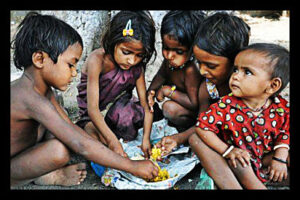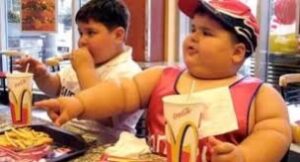A Crisis You Probably Never Knew Existed!

I came across this in my reading yesterday: Hormel Foods is once again sponsoring what it calls the “10 Under 20 Food Heroes Awards” to honor young people working in the fight against “food insecurity.”
What is food insecurity?
The US Dept. of Agriculture’s definition is “a household-level economic and social condition of limited or uncertain access to adequate food.”
I wasn’t sure what that meant, so I went on a little Google search. I found nothing that helped me understand it any better, but I did discover that, apparently, it’s a huge crisis.
According to Feeding America, one of more than a dozen non-profit, fund-raising businesses that are enjoying the growth of this crisis, “nearly 40 million Americans, including 12 million children, faced food insecurity in 2020.”
Did you know that?
I didn’t. Nor did I know that “food insecurity can have a seriously bad impact on people that experience it.” For example, they say that…
* Food insecurity can cause serious health issues when people must choose between spending money on food and medicine or healthcare.
* Food insecurity can make it more difficult for a child to learn and grow.
* Food insecurity can lead to difficult decisions, like choosing between food and rent, bills, and transportation.
I know what you may be thinking: “Really? In America? I thought the food problem here is that so many Americans are too fat!”
Well, yes. That is true. The data (from the FDA as well as other government sources) indicate that 20% of America’s children and 30% of its adult population are obese. Another 30% of adults are just fat – too fat, in fact, to be eligible for basic training. And the lower the family income, the more likely it is that family members will be fat or obese.
So then, if you were heartless, you might wonder whether the Food Insecurity Industry’s efforts to get more food to our low-income people is the right thing to do. Because if lack of food was the problem, wouldn’t all those tens of millions of “food-insecure” people in America be skinny? Like the photos we see now and then of adults and children in third-world countries?
No. In America – and the rest of the developed world – we have the opposite problem. So, clearly, it’s not because they need more food.
Starvation and undernourishment (when people are not able to consume enough calories to sustain health) are problems that do exist. They are much less common than many people think, but they exist, usually on a temporary basis, in third-world countries suffering from famine or war.
But in America, we have neither starvation nor undernourishment. We have malnutrition caused by eating too much of foods that make you fat and sick.
Countless studies have shown that when your diet is heavy in carbohydrates and processed foods, all sorts of unhealthy things happen. One, for example, is that your insulin spikes. And when insulin spikes, you experience (an hour or two later) a craving for more junk.
In other words, low-income Americans do not suffer from not eating enough. They suffer from eating too much of the wrong foods.
And the Food Insecurity Industry is telling us it’s a crisis. If they were to say, “In America we have a crisis of Americans eating too much junk food and being fat,” I would agree. But they won’t say that because then how could they justify the billions of dollars they raise each year to “solve” that problem?
It would be a hard sell, because we all know how to solve the problem of being fat. We don’t need a thriving industry, funded by taxpayers, to figure it out.
They say a picture is worth a thousand words. Here are four that may help.
This is what starvation looks like:

This is what undernourishment looks like:

This is what malnutrition looks like:

This is what food insecurity looks like:

 MarkFord
MarkFord